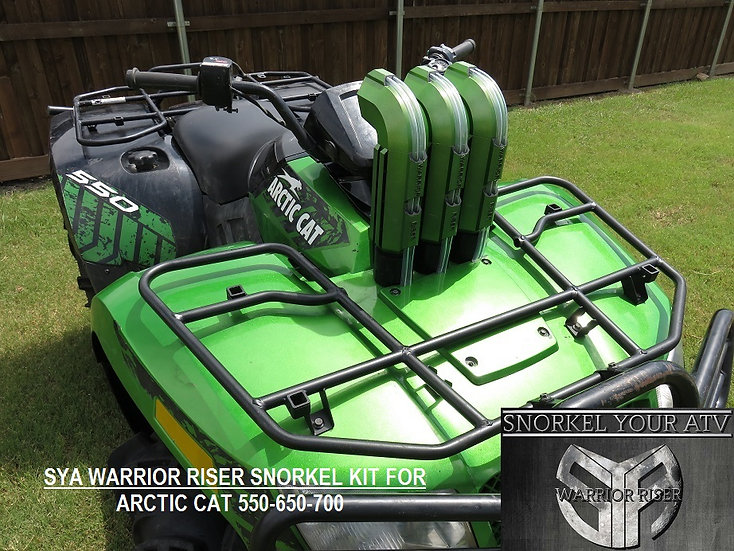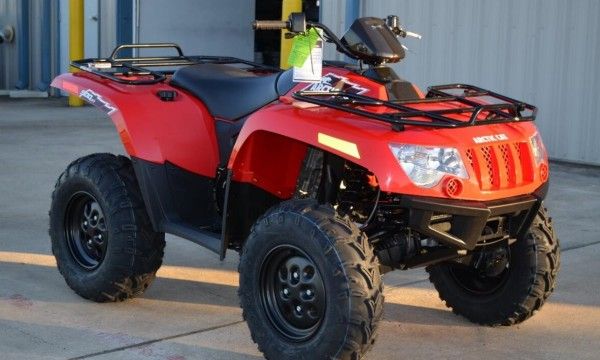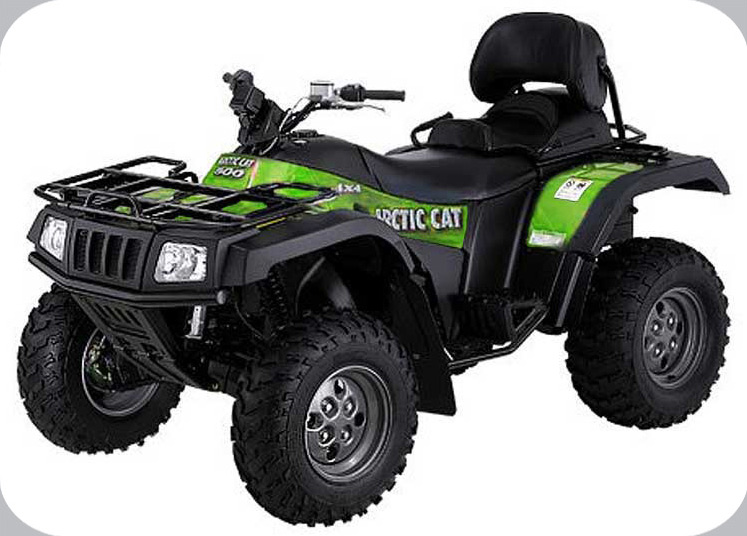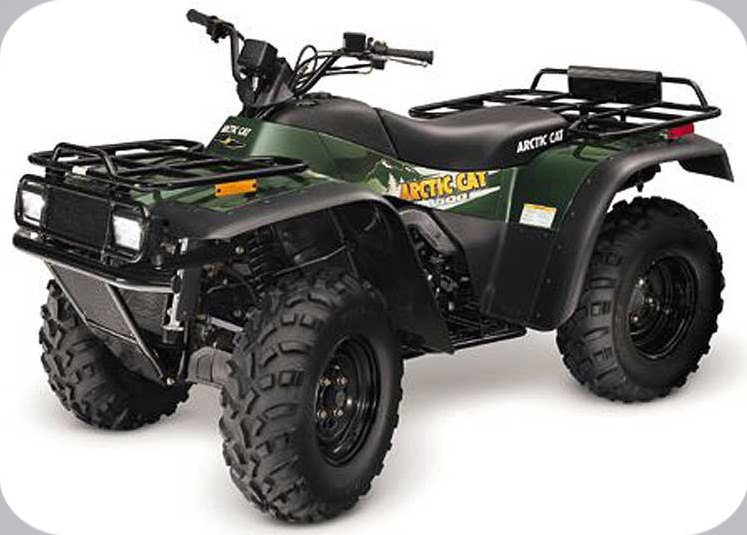You may have heard of a choke before and noticed your machine has one. But how does a choke work? Well, I’ll explain that here, as well as when to use a choke and common problems with ATV chokes.
A choke is only seen on a carburetor of a carbureted engine. If you have a fuel injected engine, but still notice what looks like a choke lever, that is actually a fast idle or idle advance. It serves the same purpose but works in a different way than a choke.
Another thing many people confuse for a choke, is called the enricher. They work the same way as a ‘fast idle’ in theory but are found mostly on carbureted engines. I’ll give a brief explanation of each of these. Because a choke, an idle advance, and an enricher are all used for mostly the same purpose.
An ATV choke works by blocking some of the air from entering the carburetor and mixing with the fuel. When the choke is on, the air/fuel mixture entering the engine is a lot richer (more fuel than normal) which helps start and keep an engine running if it’s cold. Once the engine warms up, you can turn the choke back off.
Notice in the diagram below, the choke valve is allowing maximum air to pass through the carburetor to mix with the fuel. The choke is in the off position in this picture. This is how a warmed up engine will look.
If you are starting the engine on a cold day, you may want to use the choke to help you start and idle the engine. When you set the choke to the on position, the choke valve will close, blocking a lot of air from entering and mixing with the fuel.
The fuel/air mixture will be very rich (contain a lot of fuel) which helps get a cold engine started and idling. You won’t want to leave the choke on while you ride, the choke could actually stall the engine once it warms up.
An idle advance is mostly seen on fuel injected engines, but has the same purpose as a choke. You would use it to start a cold engine. The idle advance however, is essentially just adding extra fuel to the engine rather than limiting air the way a choke does.
This still creates a richer air/fuel ratio and helps start cold engine all the same.
The enricher works the same way an idle advance, but is found inside a carburetor. They basically add fuel to the air/fuel mixture helping start cold engines. Many people confuse the enricher with a choke because it is on a carburetor and operates from a lever or plunger like a choke does.
An ATV choke is most useful to start a cold engine. By creating a richer fuel to air ratio, the engine has more gas to stay running. Once the engine is warmed up though, it won’t need the extra fuel. You shouldn’t ride or rev the ATV while the choke is on. Wait for the engine to warm up, turn the choke off, and then you can ride.
There are four main types of ATV choke. The plunger style, lever style, handle style, and switch style. I’ll go over each of these and how you’re supposed to use them. Here is a picture to show you the differences.
The lever type choke should be in the down position during normal operation. To use the choke to start a cold engine, lift up on the lever to turn the choke on. Once the engine has warmed up, return the lever to the down position.
To use the choke to start a cold engine, lift up on the lever to turn the choke on. Once the engine has warmed up, return the lever to the down position.
The handle type choke is usually found on the left side of the handle bars if you have this type of choke. During normal operation the handle type choke will be pushed all the way to the left.
To turn the choke on, push the handle lever to the right. Once the engine is warm, return the handle lever back all the way to the left.
The plunger type choke is usually found on the side of the machine or near the fuel shut off valve. During normal operation the plunger type choke will be all the way suppressed (all the way in).
To open the choke to start a cold engine, pull up on the plunger type choke. Once the engine is warm, push the plunger back to be all the way suppressed.
A switch type choke is usually found on the side of the machine or near the gas tanks fuel shut off valve. During normal operation, the switch type choke will lay flat (like in the picture above).
During normal operation, the switch type choke will lay flat (like in the picture above).
To open the choke to start a cold engine, pull up on the switch so it is sticking straight out, 90 degrees from its starting position. Once the engine is warmed up, return the switch to its original position.
Here I will answer some of the most common choke related questions I get. Not all of these are a simple easy fix, but maybe I can help point you in the right direction.
This problem happens quite a bit actually. It’s when you pull the choke to the open position, and it immediately slides back a little bit. This causes the choke to only be half on or turn all the way back off completely.
Of course you could just stand there holding it on, but who wants to do that. The most common reason this happens is because the cap to the choke comes loose. When this happens the little grips that apply pressure to the choke tube don’t grab and hold as strongly anymore.
Simply pull back the rubber gasket protecting the choke tube, right under the choke plunger you pull up on. And you should find a little cap that screws in and out to adjust the tightness of the choke. Tighten er down a bit and you should see an improvement.
This screams carburetor problems all over it. Sure you could adjust your idle screw first and maybe that will fix it. If the idle screw is set to idle too low, the engine will die everytime you turn the choke off.
But you’re probably going to need to clean your carburetor out good. I mean take apart and clean everything especially the needle jet/pilot jet. This happens a lot if old gas has been sitting in the float bowl for too long.
The carburetor is prone to getting plugged up from debris in gas or from old gas gumming things up.
If none of these answers helped you, you may need to replace the choke and choke cable on the machine. This usually isn’t the case. If you’ve ruled out choke problems and don’t know where to start, check out my ATV Won’t Start: Common Problems And How To Fix article for a step by step guide.
Sharing is caring!
Delivery options and delivery speeds may vary for different locations
Sign In
or enter a zip code
Email * Password *
REPAIR & HOW TO
MAINTENANCE
TROUBLESHOOTING
GUIDES
TIPS & TRICKS
ALL ARTICLES WATCH VIDEOS ABOUT US SHOP PARTS CONTACT US
An engine that only runs on choke is a common complaint, especially among dirt bike and ATV owners. If you find it’s happening to your motorcycle, ATV or side-by-side, you've come to the right place.
Watch the video above or read on below to learn how to troubleshoot an engine that only runs on choke.
Why a Motorcycle or ATV Only Runs on ChokeAn internal combustion engine needs a precise mixture of fuel and air to run properly. When the engine is cold, it needs slightly more fuel in the fuel/air mixture for it to start, which is what the choke does. The choke increases the amount of fuel in the mixture, creating a richer mixture. This allows the engine to function at its best until it has warmed up enough to run on its normal operating fuel mixture. At that point the choke is turned off and the engine runs with a leaner fuel/air mixture.
If a motorcycle or ATV only runs with the choke on, it’s because the richer “choke on” mixture is actually closer to the engine’s normal operating fuel mixture than the leaner “choke off” mixture. So when the choke is turned off, the engine gets too little fuel and too much air for it to run and it stalls.
If you haven’t altered the mixture screw on your carburetor, then why is the engine suddenly running too lean? Either the jets are clogged and you’ll have to clean the carburetor or there’s a leak allowing excess air into the carb.
Dirty CarburetorA pilot jet and a main jet inside the carburetor control the amount of fuel entering the carb. These jets have incredibly fine tolerances, and if they get obstructed or blocked, the amount of fuel entering the carb will be reduced and the effect on the performance of the carburetor and the engine will be dramatic.
Tiny debris particles from dirty fuel can easily block a jet, but the most common cause of clogged jets is stale fuel sitting in the carb when the bike or ATV is inactive. When fuel breaks down, it leaves behind a gummy residue, almost like a varnish that builds up on everything it touches, including the pilot and main jets.
A split in the air intake boot or a vacuum line, or a loose clamp holding the intake boot to the carb or engine will allow additional air to flow into the carburetor. This excess of air overwhelms the amount of fuel in the carb and creates an overly lean mixture.
Troubleshooting Carburetor ProblemForget about pouring a fuel additive into your gas tank to clean your carburetor. Additives won’t clear jets blocked by dirt, and aren’t strong enough to remove old fuel build-up. You’re going to have to strip the carb.
Actually this is a lot simpler than people think. To remove the carburetor, you’ll have to disconnect the throttle cable, choke cable, air intake, fuel line, a couple of mounting bolts and that’s it. Once the carb is off the machine, it’s best to clean the carburetor to minimize the chances of dirt getting inside it. Remove the float bowl (you may need an impact driver to loosen the screws without stripping them) and remove the float and the float valve to access the jets.
Once the carb is off the machine, it’s best to clean the carburetor to minimize the chances of dirt getting inside it. Remove the float bowl (you may need an impact driver to loosen the screws without stripping them) and remove the float and the float valve to access the jets.
Remove the pilot jet, the main jet, the needle jet and the jet needle from the carburetor, and clean them thoroughly with carb cleaner. Otherwise, replace the jets with new ones. A carburetor rebuild kit will include all the jets needed to overhaul the carb, as well as all the O-rings, gaskets and washers. Don’t forget to also clean all the channels running through the carburetor with carb cleaner and compressed air before reinstalling the jets.
Troubleshooting Air LeaksTo repair an air leak, you obviously have to find it first. Start by making sure the clamp holding the air intake boot to the carburetor is tight, and the clamp or bolts mounting the intake boot to the cylinder block are also tight. If everything is secure, inspect the intake boot for splits or damage.
If everything is secure, inspect the intake boot for splits or damage.
If you still haven’t found the leak, start the motor and spray carb cleaner around the air intake boot, the area where the boot connects to the carb, and the area where the boot connects to the engine. Also, spray any vacuum lines if your carb has them. The carb cleaner will be drawn in at the point of the leak, making it easy to pinpoint. Hopefully tightening a clamp will fix the leak, but if the problem is a split boot or vacuum hose, the part will need to be replaced.
Keeping the Carburetor in Good ConditionTo prevent carburetors from getting clogged, never leave them full of fuel if the motor isn’t going to be running for a while.
Set the petcock to OFF, and either run the motor until all the fuel has been used by the engine, or drain the carburetor by removing the drain screw from the bottom of the carb’s float bowl.
body
Subscribe to this RSS feed
Read more...
Double All-wheel drive ATV Arctic Cat TRV 700 with the possibility of replacing the passenger seat impressive cargo. The model is armed with the latest generation of silent blocks, thanks to which vibration during movement is minimized, and the engine works without interruptions.
Standard Arctic Cat TRV 700 equipped with touring glass, winch, mirrors and a rear case, the control knobs are heated, so even long journey will be comfortable. 69 engine5 cc liquid cooling system.
Read more...
Arctic Cat TRV 1000 - ATV model 2009 in the standard configuration is armed with a new engine with a working 951 cc and liquid cooling, tourist windshield, heated control knobs, capacious rear trunk and winch, which together provide movement on arbitrarily difficult terrain without delay.
Four-wheel drive and highest ground clearance (27.9 cm) with a significant weight of 362 kg provide ATV Arctic Cat TRV 1000 good cross-country ability. nine0003
Read more ...
The Prowler HDX 700i received a stronger frame, made of round pipes, will also be able to be produced in new colors - it will be grayish, dark greenish and camouflage.
More ...
The Arctic Cat Prowler ATV series is positioned as a symbol of freedom, because the creators sought to make even a long journey comfortable on them.
Because Arctic Cat Prowler models are equipped with independent suspension on the front and rear wheels, the most powerful engine, the highest ground clearance and, as a result, excellent maneuverability and the highest patency. Practically ATVs of this series combine within themselves the abilities sports all-terrain vehicle and the working functionality of the tourist model applicable for long movement. nine0003
More ...
Arctic Cat 700i ATV MudPro LTD adds more massive bumpers, winch and electric power steering. If you are an extreme, love adventure and dream of more easy to operate and reliable ATV, then this model is yours.
If you are an extreme, love adventure and dream of more easy to operate and reliable ATV, then this model is yours.
Read more...
ATV Arctic Cat (90 Series) is positioned as a children's one, but differs from adult models only dimensions and low weight. Produced in a limited series. Equipped with new four-stroke engine with a volume of 90 cc with air cooling automatic box and suction.
Arctic Cat (90 Series) rear wheel drive with medium ground clearance of 18.5 cm improves cross-country ability, the headlight will be indispensable in the black time of the day, and the rear transmission allows you to simply cancel a bad maneuver.
More...
Arctic Cat (700 Series) - Limited a series of quad bikes designed for real adventurers. Equipped with strong liquid cooling engines with a displacement of 69five cc, fully independent suspension on both axles, high ground clearance - 28 cm, special tires 28 inches applicable for languid off-road.
the parameters of all-terrain vehicles are subject to any landscape. Included as standard Arctic Cat (700 Series) comes with a winch and reinforced "bars" for mutual assistance and safety.
Included as standard Arctic Cat (700 Series) comes with a winch and reinforced "bars" for mutual assistance and safety.
Read more...
Mind-blowingly powerful Arctic Cat (650 Series), a strong and passable ATV will become an indispensable assistant in almost all situations. In the standard configuration, it has a four-stroke engine with a working 641 cc liquid-cooled, all-wheel drive, weight 353 kg, reinforced suspension, ground clearance 27.9cm, a reliable trunk - in a word, everything you need to conquer a rugged terrain.
With all this, the Arctic Cat (650 Series) looks decent on the outside, without design frills and with the value of practicality inspires confidence.
Read more...
Double Arctic Cat (500 Series) ATV with ergonomic pilot and passenger seats, backrest and side handles increases comfort and driving safety. There is an electric device panel, on the control wheel you can switch the drive from 2 to 4 wheels. nine0003
ground clearance - 25 see, the suspension can work in 5 different ways. The Arctic Cat (500 Series) set of devices provides good control over the movement on any terrain. The ATV is simply controllable and completely predictable.
The Arctic Cat (500 Series) set of devices provides good control over the movement on any terrain. The ATV is simply controllable and completely predictable.
Read more...
The operation and life of the engine directly depends on the quality of the fuel mixture. The carburetor is responsible for the preparation of the composition, but after prolonged use of the equipment, the settings “go astray”. This results in:

Many riders who decide to buy an inexpensive ATV simply do not spare the technique and ignore this procedure. But even if you plan to change your device in 1.5-2 years, adjustment is needed. The reason for this is increased fuel consumption. A quad with an untuned carburetor "eats" 30-40% more gasoline, and these are tangible costs.
A quad with an untuned carburetor "eats" 30-40% more gasoline, and these are tangible costs.
So how do you adjust the carburetor on a Chinese ATV? For this you need:
However, it is important to remember that all adjustments are made only with a "clean" carburettor. This means that the rider needs to remove all the dirt from the node and flush the system to remove condensation and sediment from it.
Note: Just before adjusting, the engine must be warmed up to operating temperature.
To set the carburetor idle speed, the float chamber must first be cleared of fuel. To do this, start the all-terrain vehicle, close the fuel cock and wait until the machine stalls (5-10 minutes). To speed up the process, you can take a little ride on the quadric. Of course, gasoline can be drained, but in any case you will have to warm up the device, so the first method of "removing" gasoline is more effective. nine0003
To speed up the process, you can take a little ride on the quadric. Of course, gasoline can be drained, but in any case you will have to warm up the device, so the first method of "removing" gasoline is more effective. nine0003
Then:

Read the manual before adjusting the carburetor on a 125cc ATV to be sure. Remember that the location of the bolts is different in different devices, so read the documentation in advance. nine0003
To evaluate the quality of the fuel composition, make a test run. After that, unscrew the candle, and evaluate its condition. If it is:

Also look out for these "symptoms": damaged tip (failed electrode), oil deposits (damaged rings and caps), chips and inclusions (a sign of motor failure).
To adjust the mixture you need to twist the needle cover and pull it out. To get the needle, pull out the cable. After that, move the ring in the required direction (lower - more air, but less fuel and vice versa). Then start the engine and make sure it doesn't stall. nine0003
The last step in adjusting the 125cc ATV carburetor is adjusting the petrol level. To do this, you need:
